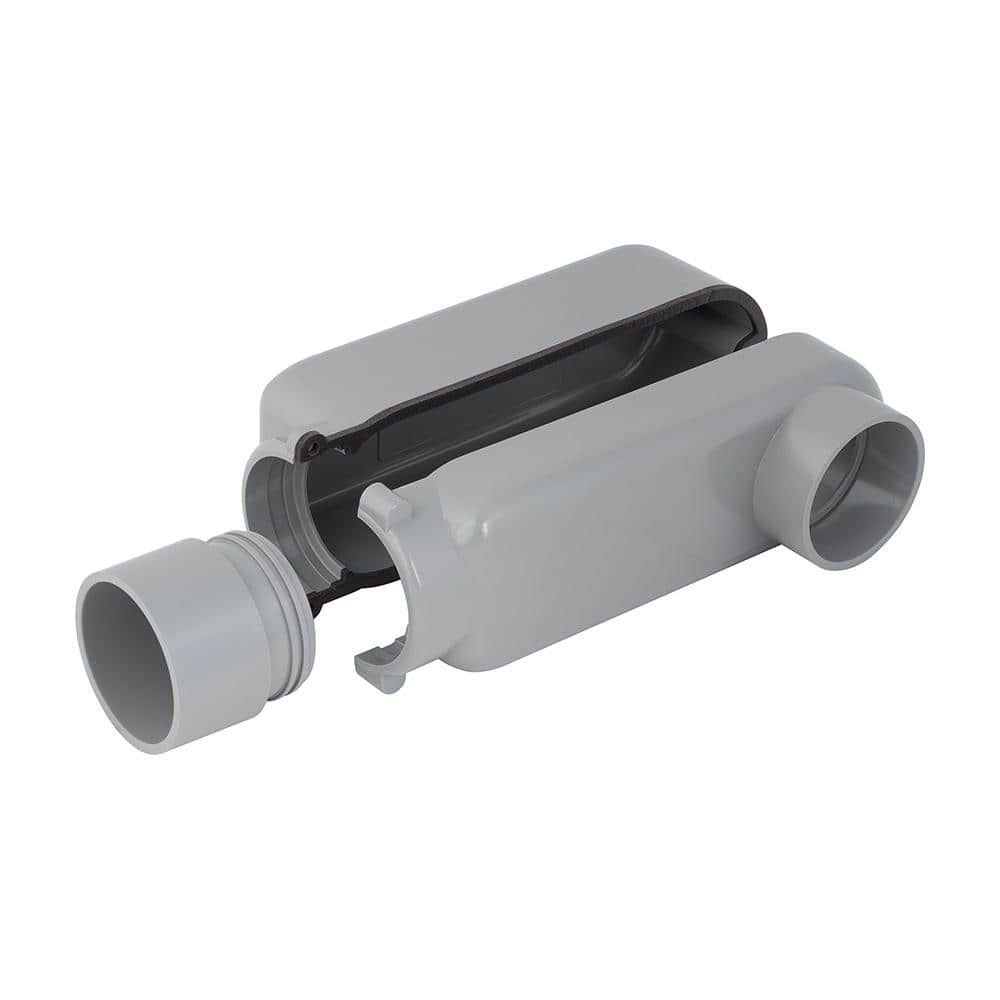Alwayslearningelec
Senior Member
- Location
- NJ
- Occupation
- Estimator
What are the most common conduit bosies you use? I would say LB followed by C or T. Correct? Thanks.
hey, Alwayslearningelec,What are the most common conduit bosies you use? I would say LB followed by C or T. Correct? Thanks.
Don pointed out a use of C's but what do you use them for? I actually don't recall ever using a C. Maybe to meet a pull point requirement but not actually using it? (If I had a pull point I was actually going to use, I would probably just use a box, unless maybe it's an aesthetic thing)Definitely LB then C, after that T or TB, LL, LR. Almost never X.
Yes as a pull point when using small conductors (#12 or #10) and to satisfy the 360° rule. Depending on the fill and length of the runs we will probably pull through it if possible. We also use them to pull in the wire before the entire run is complete like outside of an electric closet before the panels are installed.Don pointed out a use of C's but what do you use them for? I actually don't recall ever using a C. Maybe to meet a pull point requirement but not actually using it?
They are proud of them but they sureThen you have the 4" mogul Aluminum LB's or Appleton 4" pulling elbows. Make sure and check the prices of those puppies before submitting your estimates
I thought I was going to get fired once when I purchased one that had rollers in it! LOLThey are proud of them but they sure
make large wire pulls a breeze compared to standard LBs



While that would make the installation much easier, unless it complies with the dimensions required for an angle pull in 314.28 or is marked with the maximum sized and number of conductors permitted, it is a code violation. I also see it as a violation of 300.18(A).View attachment 2570386 View attachment 2570387

Southwire EZLB Service Body Entrance Conduit Body EZLB200 - The Home Depot
Get rid of leaking plumbing pipes and sprinkler lines easily by using this Madison Electric Products EZLB Service Body Entrance Conduit Body.www.homedepot.com
Them using it for fiber in the picture might be how they're showing off the product in a compliant way. If the fiber is only being protected from bellow grade to inside the Masonry it's not a complete conduit section just a form of mechanical protection.While that would make the installation much easier, unless it complies with the dimensions required for an angle pull in 314.28 or is marked with the maximum sized and number of conductors permitted, it is a code violation. I also see it as a violation of 300.18(A).
The description talks about "larger service entrance wire". It is clear that they intend this fitting to be used for power conductors.Them using it for fiber in the picture might be how they're showing off the product in a compliant way. If the fiber is only being protected from bellow grade to inside the Masonry it's not a complete conduit section just a form of mechanical protection.
or is marked with the maximum sized and number of conductors permitted,
The way some of the mogul LBs are designed when the cover is removed there is no "opposite wall" so I would think 314.28(A)(2) exception would apply.While that would make the installation much easier, unless it complies with the dimensions required for an angle pull in 314.28 or is marked with the maximum sized and number of conductors permitted, it is a code violation. I also see it as a violation of 300.18(A).
That does not change the required 6x between the two conduit entries. That exception is only for the depth of the fitting, Pretty much every LB used with conductors 4 AWG and larger uses that exception.The way some of the mogul LBs are designed when the cover is removed there is no "opposite wall" so I would think 314.28(A)(2) exception would apply.
They might, but where the distance between the conduit entries is not 6x the trade size of the raceway, the size and number of conductors permitted is required to be on the fitting. Since almost all of those combinations are for 3 conductors, the code permits a field calculation. You find the sum of the cross sectional areas of the permitted conductors, and can install any other combination where the sum of the cross sectional areas does not exceed the sum of the areas of the conductors marked on the fitting.I wonder what they are marked with for # of conductors? I don't know the process for coming up with those marked values on conduit bodies, but maybe due to the design they allow a fairly large conductor combination?
In this regard, I don't see it as significantly different from a pulling elbow. Although maybe the import of 300.18(A) is that you have to have the conduit strapped before installing conductors, so you can't do the maneuver shown in the first photo.I also see it as a violation of 300.18(A).
Not sure what you are calling a "pulling elbow". What I know as a pulling elbow works just like an LB...it has a removable cover.In this regard, I don't see it as significantly different from a pulling elbow. Although maybe the import of 300.18(A) is that you have to have the conduit strapped before installing conductors, so you can't do the maneuver shown in the first photo.
Cheers, Wayne

